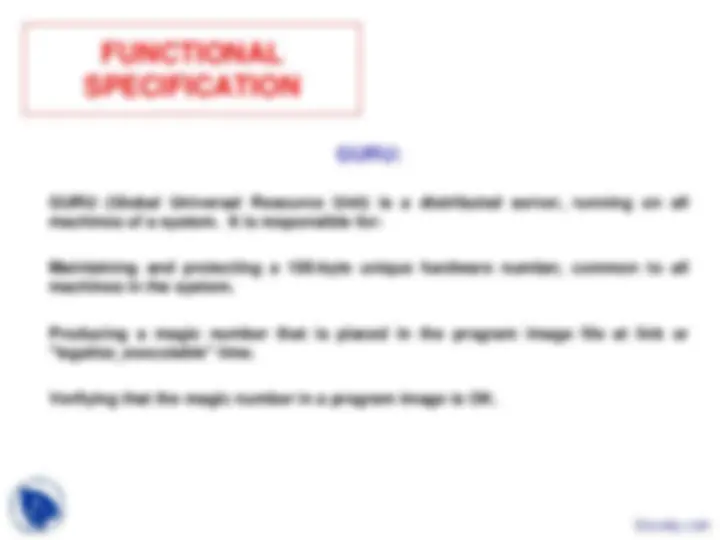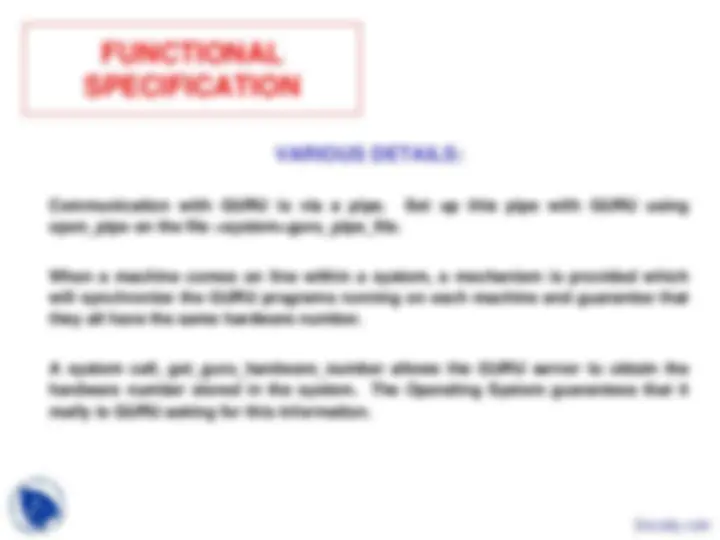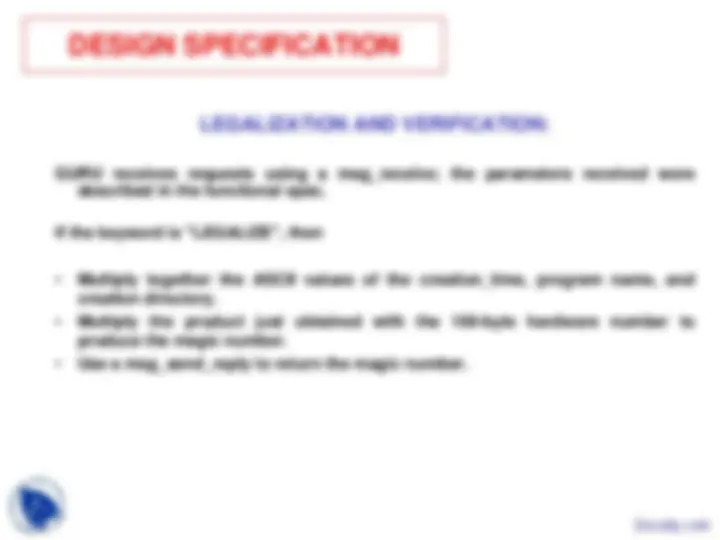











Study with the several resources on Docsity

Earn points by helping other students or get them with a premium plan


Prepare for your exams
Study with the several resources on Docsity

Earn points to download
Earn points by helping other students or get them with a premium plan
Community
Ask the community for help and clear up your study doubts
Discover the best universities in your country according to Docsity users
Free resources
Download our free guides on studying techniques, anxiety management strategies, and thesis advice from Docsity tutors
Some concept of Computer Systems Performance Evaluation are Measurement and Statistics, Performance Evaluation, Performance Metrics, Queueing Lingo, Software Performance Engineering. Main points of this lecture are: Super Worm Analysis Mechanism, Document Describes, Detect Suspicious, Super Computer Company Hardware, Processes Running, Foreign, Unlimited Processing, Customers, Attacked, Worm Analysis Mechanism
Typology: Slides
1 / 16

This page cannot be seen from the preview
Don't miss anything!










This document describes the need for a product that will detect suspicious and
foreign processes running on Super Computer Company Hardware. Recent
events in the UNIX world have shown that undesirable elements can run amok
when given unlimited processing power. SCC customers have expressed great
concern that their machines may be attacked by such a mechanism.
The_Competition has recently introduced its TGIF system (The_Competition Guts
Intruders Fast ). The_Competition customers have expressed satisfaction with the
functionality (no intruders have been reported in the first three months of
operation.) These same customers have not been happy with performance
however; hearsay evidence has it that TGIF can require up to 10% additional CPU
power on a The_Competition system. The_Competition is reportedly planning a
performance release to address customer concerns.
In order to keep monitoring activity to a minimum, the legality of a program is
verified when a program is first executed. This is a one-time verification cost and
was chosen over the more costly mechanism of scanning/verifying all processes at
fixed time intervals.
Legality of a program to run on a particular system is given at either link time or via
a "legalize_executable" command. In other words, an executable becomes legal on
a system either by virtue of having been linked on that system or by being imported
and then "legalized" by an authorized individual.
GURU (Global Universal Resource Unit) is a distributed server, running on all machines of a system. It is responsible for:
Maintaining and protecting a 100-byte unique hardware number, common to all machines in the system.
Producing a magic number that is placed in the program image file at link or "legalize_executable" time.
Verifying that the magic number in a program image is OK.
Program legalization occurs either at link time or at "legalize_executable" time. The steps used are as follows:
Either the linker or the legalize-pm program sends a pipe request to GURU using msg_send, with the "message" parameter containing:
The linker or the legalize_executable program receives a reply back from GURU using msg_receive_reply, with the "message" parameter containing:
Program verification occurs at execution time. The steps to be followed include:
GURU receives requests using a msg_receive; the parameters received were described in the functional spec.
If the keyword is "LEGALIZE", then
When GURU is initialized upon machine startup, it obtains the 100-byte hardware number using a get_guru_hardware_number. It opens pipes with the GURU incarnations on all the other machines of the system and broadcasts its 100-byte number. The other servers respond either with an "OK" or with a "WE'VE GOT A PROBLEM". In the latter case, the system administrator will get involved and sort everything out.